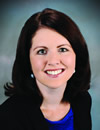By Karen S. Karp, Sarah B. Bush, and Barbara J. Dougherty, Posted July 14, 2014 –
In
the August 2014 issue of Teaching Children Mathematics, authors Karen S. Karp, Sarah B. Bush,
and Barbara J. Dougherty initiated an important conversation in the elementary
mathematics education community. We are dedicating this discussion space as a
place where that conversation can continue.
In
their article, “13 Rules That Expire,” the authors point out thirteen math rules commonly taught in
the elementary grades that no longer hold true in later grades; in fact, these
rules “expire.” For example—
Rule 1: When you
multiply a number by ten, just add a zero to the end of the number.
This
rule is often taught when students are learning to multiply a whole number
times ten. However, the rule is not true when multiplying decimals (e.g., 0.25
× 10 = 2.5, not 0.250). Although the statement may reflect a regular pattern
that students identify with whole numbers, it is not generalizable to other
types of numbers. Expiration date: Grade 5 (5.NBT.2).
See
the article for the other
rules.
Using
the comment section that follows this blog post, submit additional instances of
“rules that expire” or expired language that the article does not address. If
you would like to share an example, please use the format of the article (as
listed below):
- State the rule that teachers share with
students.
- Explain the rule.
- Discuss how students inappropriately
overgeneralize it.
- Provide counterexamples, noting when the rule
is untrue.
- State the “expiration date” or the point when
the rule begins to fall apart for many learners. Give the expiration date in
terms of grade levels as well as CCSSM content standards in which the rule no
longer “always” works.
If
you submit an example of expired language that was not in the article, include
“What is stated” and “What should be stated” as shown in the table below (for
additional examples, see table 1 in
the published article.
| Expired mathematical language and suggested
alternatives |
| What is stated |
What should be stated |
| Using the words borrowing or carrying when subtracting or adding,
respectively |
Use trading or regrouping to indicate the actual action
of trading or exchanging one place-value unit for another unit. |
| Using the phrase ___ out of
___ to describe a fraction—for example, one
out of seven to describe 1/7 |
Use the fraction and the attribute. For example, say the length of the string. The out of
language often causes students to think a part is being subtracted from the
whole amount (Philipp, Cabral, and Schappelle 2005). |
| Using the phrase reducing fractions |
Use simplifying fractions. The language of reducing gives students the incorrect
impression that the fraction is getting smaller or being reduced in size. |
 |
Karen S. Karp, [email protected],
a professor of math education at the University of Louisville in
Kentucky, is a past member of the NCTM Board of Directors and a former
president of the Association of Mathematics Teacher Educators. Her
current scholarly work focuses on teaching math to students with
disabilities. |
 |
Sarah B. Bush, [email protected],
an assistant professor of math education at Bellarmine University in
Louisville, Kentucky, is a former middle-grades math teacher who is
interested in relevant and engaging middle-grades math activities. |
 |
Barbara J. Dougherty is
the Richard Miller Endowed Chair for Mathematics Education at the
University of Missouri. She is a past member of the NCTM Board of
Directors and is a co-author of conceptual assessments for progress
monitoring in algebra and an iPad® applet (MOTO) for K–grade 2 students to improve counting and computation skills.
|
Archived Comments
The following ideas are ours and those of others who came to our presentations on this topic.
Rules that Expire
1. The larger the denominator, the smaller the fraction. This “rule” is often taught when students are first learning about fractions (e.g. 1/4 versus 1/12). While this rule may reflect a regular pattern that students identify with unit fractions, it is not generalizable to other fractions such as 3/4 compared to 5/12. Expiration date: Grade 4 (4.NF.2)
2. The answer always goes to the right of the equal sign (i.e.., x = 2). In the earlier grades, students often see numeric equations written consistently with the operation on the left side of the equal sign, and what is viewed as the “answer” on the right side. In later grades, when solving an algebraic equation, students are often taught to write their final solution with the variable on the left side and solution on the right. However, this rule has no true mathematical necessity because the equal sign indicates that two quantities are equivalent. The answer can be located on either side of the equation. 10 = 4 + 6, 5 = x + 2, etc. Expiration date: Grade 1 (1.OA.7)
3. The bigger number goes in the division “house” or bracket ( ). This rule is often taught when students are first learning to use the long division method with whole numbers. However, the dividend is not always the bigger number, which appears as soon as students begin working with rational numbers. Fractions, for example, can be thought of in a division context. Thus 3/4 can be represented as 3 ÷ 4. In division, the bracket has no “official” mathematical name, but identifying it as a long division symbol or a division bracket is preferable to “division house” (Wolfram Math world). Expiration date: Grade 5 (5.NF.3)
4. Fractions are pieces of the same size. Students are often taught to think of fractions as same sized pieces, but using the word size is confounding what it means to have the “same size.” A unit fraction should be able to measure the quantity, whether it is an area or length model (or other attribute). However, a whole could be partitioned into thirds and sixths, or fourths and halves with quantities that can be measured with a unit fraction, but the ‘pieces’ would not be the same size in that whole. Additionally, size can refer to multiple attributes such as area or length. Expiration date: Grade 3 (3.NF.1)
Posted by: KarenK_75019 at 7/28/2014 7:34 AM
|
The following ideas are ours (the authors) and those of others who came to our presentations on this topic.
Expired Language:
1. Using the words "take away" as the generic way to read a subtraction sign in an equation. Instead, use subtract such as 8 subtract 4 or 8 minus 4, or 4 less than 8, as not all problems are take away situations.
2. Using the notation 8 + 4 = 12 + 5 = 17 + 3 = 20 to symbolize a series of addition problems. Stringing together a series of additions (or other computations) cannot be connected with equal signs as the components are unequal. Use three individual equations in this case, each using the answer of the previous problem as the starting addend. Equal signs must connect equal quantities.
3. Using a diagonal bar in fraction notation. This notation becomes very problematic with polynomials but also for young learners who often read the diagonal as a 1 (e.g., ¾ - they might read it as 314 – especially when hand written.)Use a horizontal bar.
4. Getting rid of the decimal. Students are creating an equivalent equation by multiplying or dividing and are not doing away with the decimal point at all.
5. Saying rounding down (when talking about rounding numbers). Students often think you either round up or round down. But, sometimes the number stays the same when you “round down.” For example 30 rounded to the nearest ten is 30.
6. Saying diamond. It’s a rhombus. Diamond is not a geometric term.
7. Using rounding to mean the same as estimating. Using the word guess to mean the same as estimate. An estimate is an educated decision of either an approximation of a calculation or the amount of a given quantity. It is not a random guess. Rounding is one strategy to produce a computational estimate – but it is not synonymous with an estimate.
8.Using the word point to read a decimal. Such as “three point four” for 3.4. Instead, read a decimal as a fraction, 3.4 is “three and four tenths.” This will make converting decimals into fractions a much easier task. The only time to use the word point is when describing how a decimal is written or in a geometric context.
9. Using the word fill to talk about a situation when the area of a figure is being measured. Rather than use the word fill, which is used with volume measure, use the word cover. This will reinforce the concept of area.
Posted by: KarenK_75019 at 7/28/2014 7:41 AM
|
10. We often use the 'house' to show division of two numbers. When that symbolism is used, it is typically read as, for example, 4 'guzinta' (goes into) 8. When the same problem is written horizontally, such as 8 ÷ 4, it is read as 8 divided by 4. Reading the 'house' representation as 'goes into' often confuses students so that when they write it in horizontal form, they will write it as they say it: 4 ÷ 8. Reading the 'house' representation is 8 divided by 4 will reinforce the actual computation.
Posted by: BarbaraD_89416 at 7/29/2014 12:18 PM
|
You asked for other "rules that expire" that readers could think of. Here are two I thought of: "Line up the right hand side of the numbers to add them (in a column)" and "The denominator tells how many parts are in one whole." (Parts must be equal, and there is also the understanding that we can be speaking of a "whole group" which may have multiple objects)
Posted by: LindaA_97041 at 8/4/2014 6:37 PM
|
“Expired mathematical language” and suggested alternatives
What is stated: Say the word "and" to separate places when reading a whole number (ex. read 187 as one hundred and eighty seven).
What should be stated: Only use the word and to signify a decimal point (ex. read 187.5 as one hundred eighty seven and five tenths).
While using the word "and" to only refer to the decimal point when reading a number is considered a “cultural convention” (Beckman, 2014, p. 18), and not a "rule" in mathematics, it is confusing to students when they start to work with decimal naming. Students are taught to read the decimal point as "and" to differentiate between the whole number and the decimal number. Students should recognize there is consistency in the way numbers are read (Van de Walle, Karp & Bay-Williams, 2013). Expiration date: Grade 5 (5.NBT.A.3).
References:
Beckmann, S. (2014). Mathematics for elementary teachers with activity manual (4th ed.). Boston, MA: Pearson.
Van de Walle, J. A., Karp, K.S., & Bay-Williams, J. M. (2013). Elementary and middle school mathematics: Teaching developmentally (8th ed.). Upper Saddle River, NJ: Pearson Publications.
Posted by: RebeccaH_18324 at 8/11/2014 11:30 AM
|